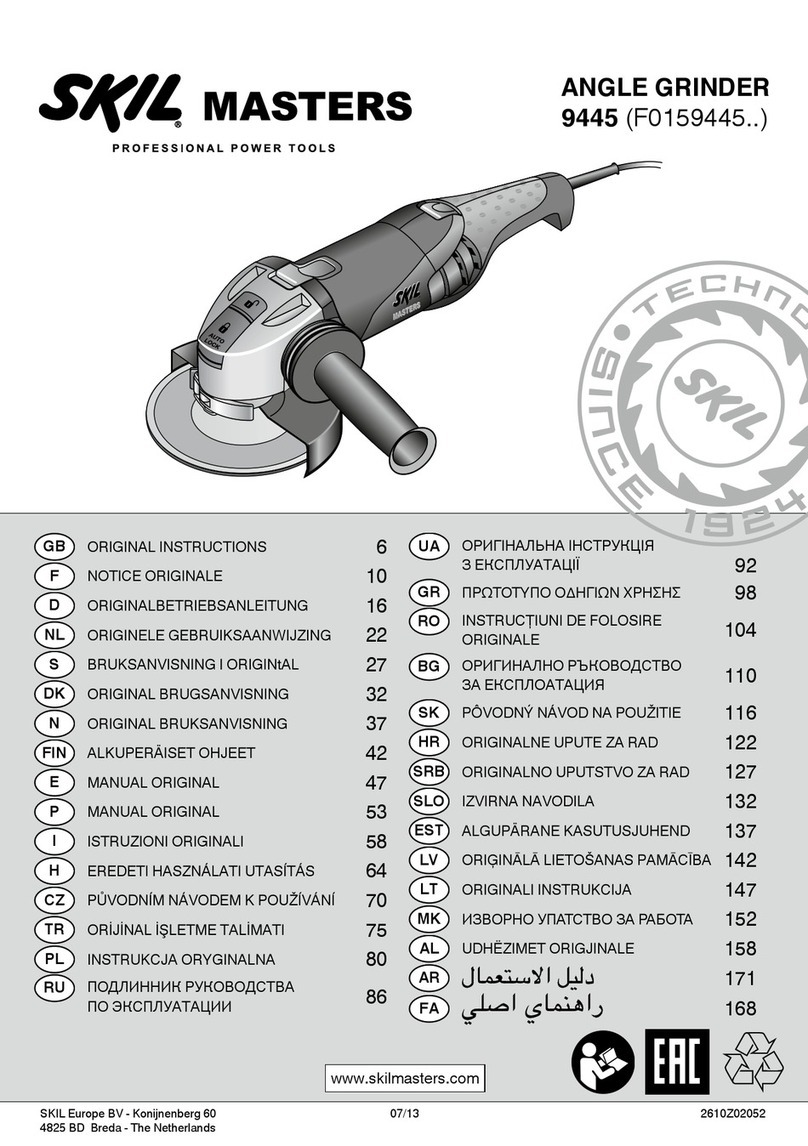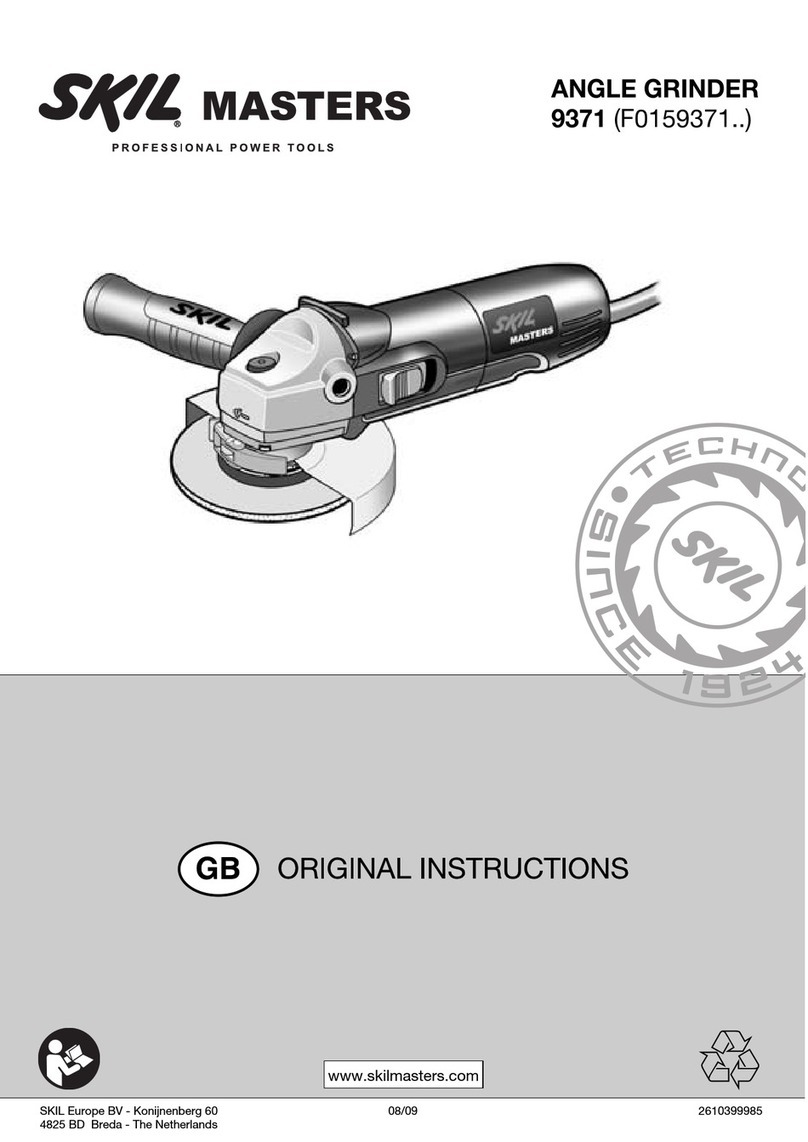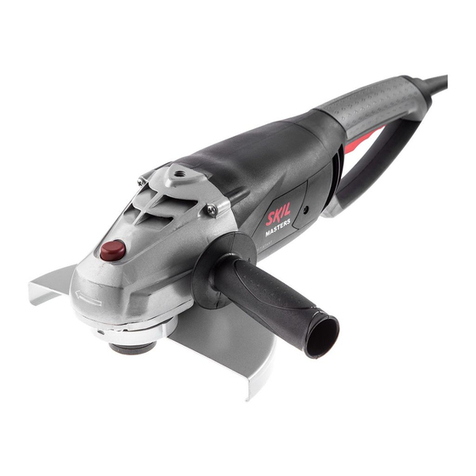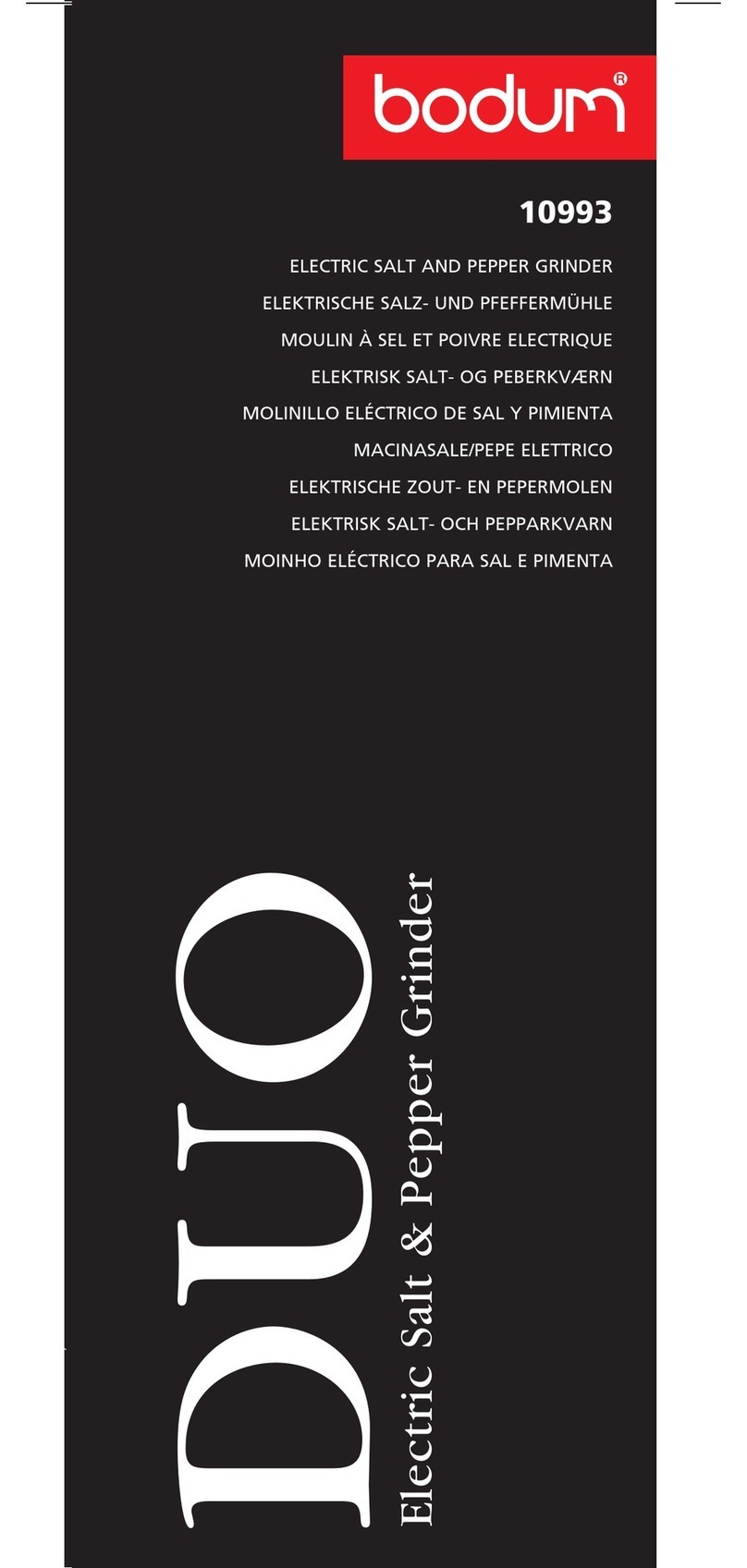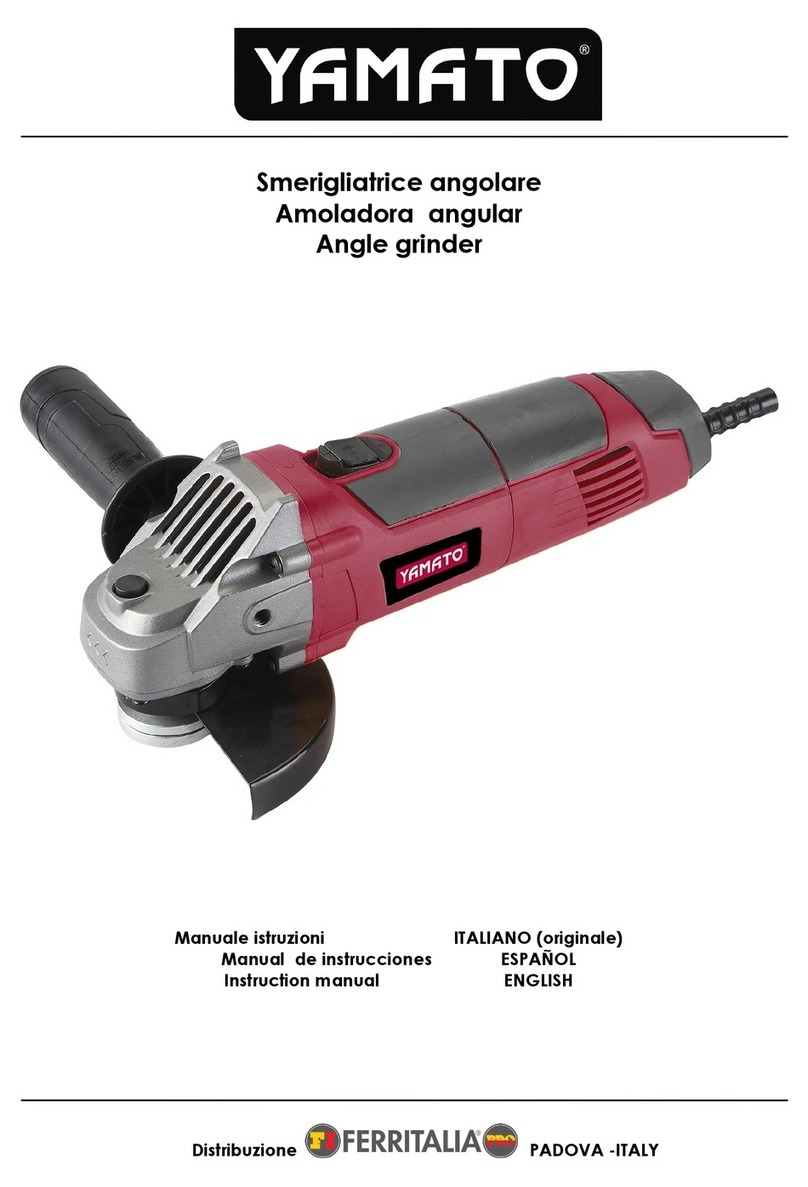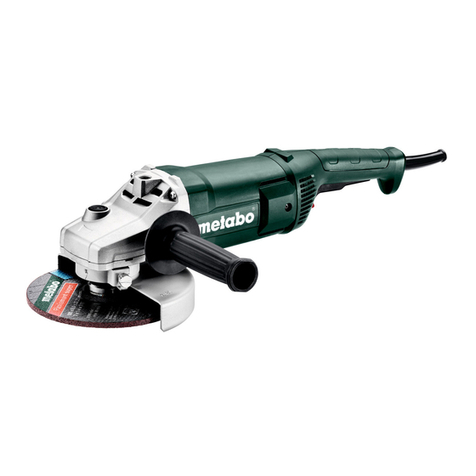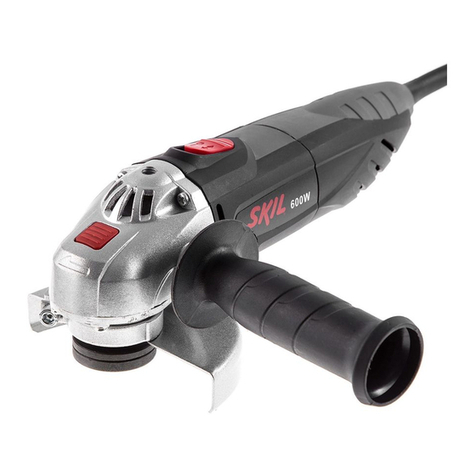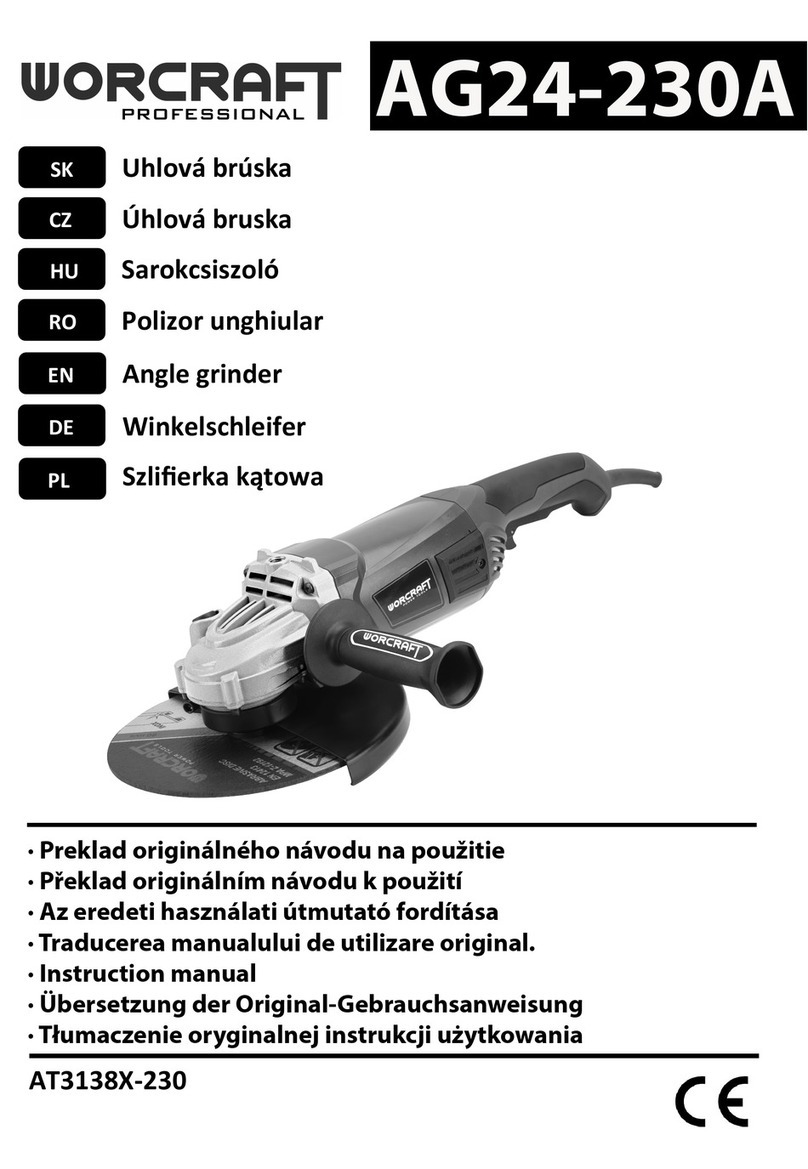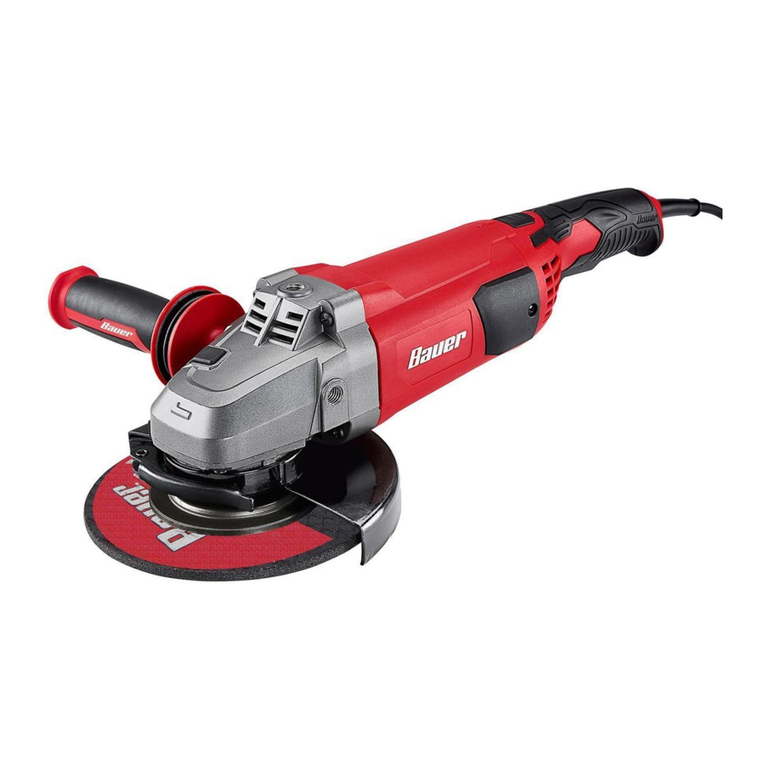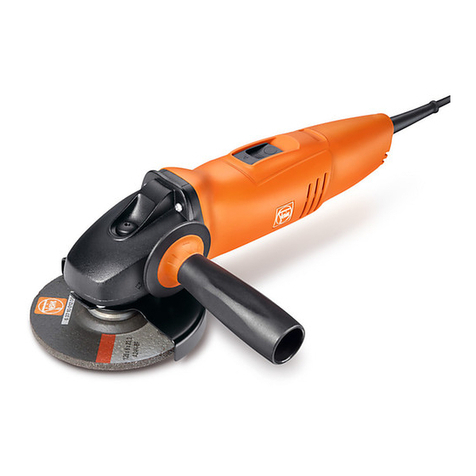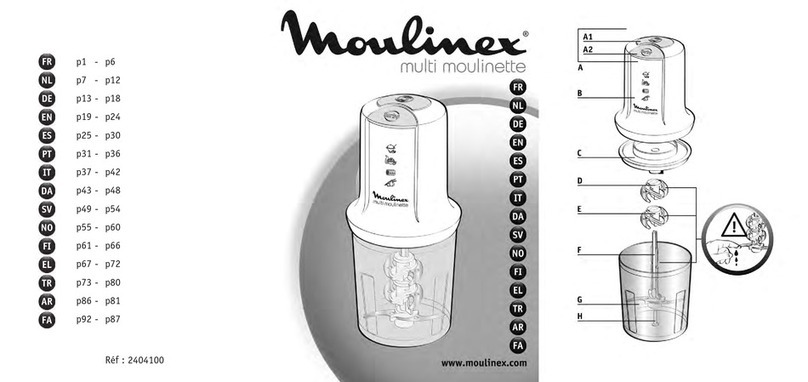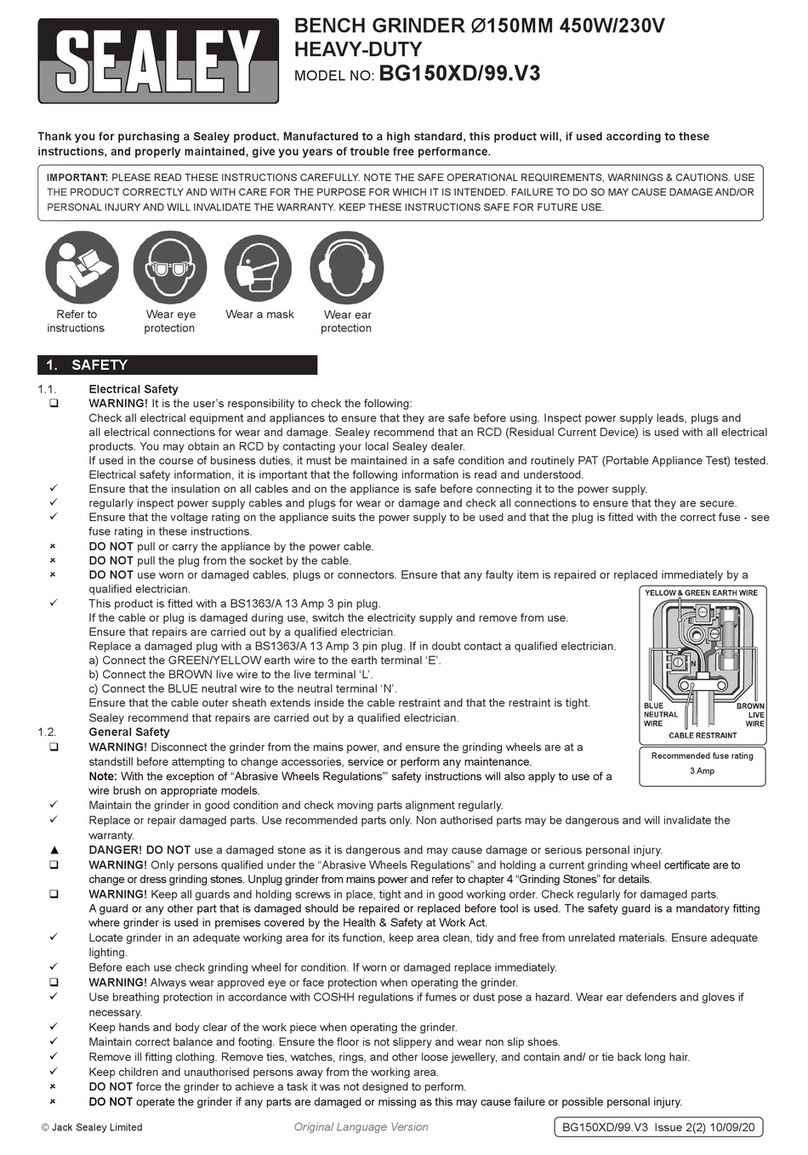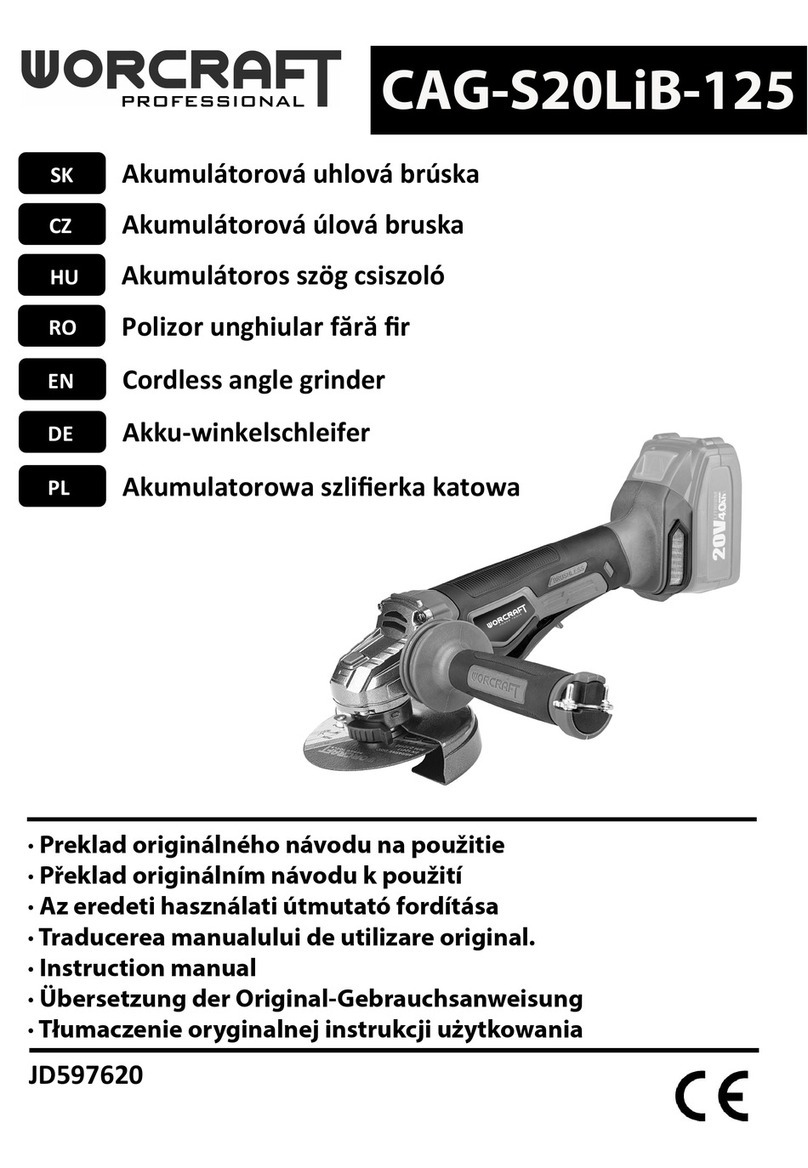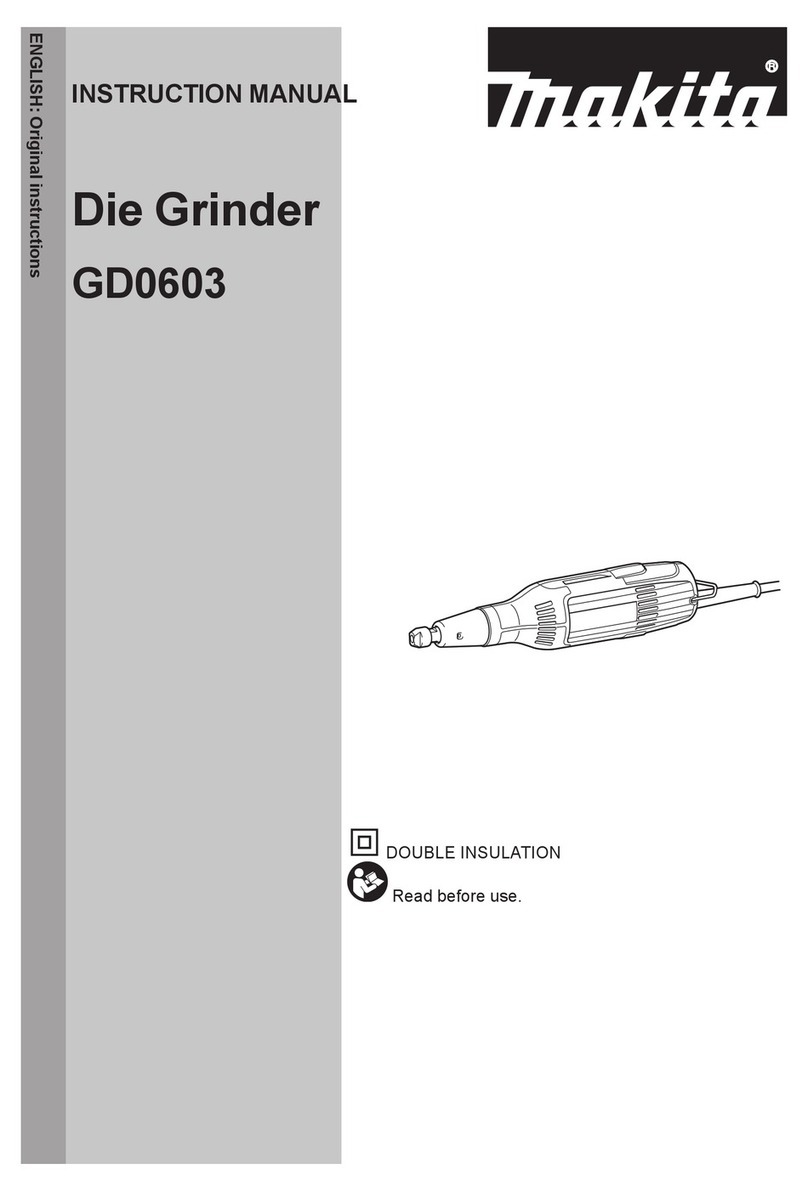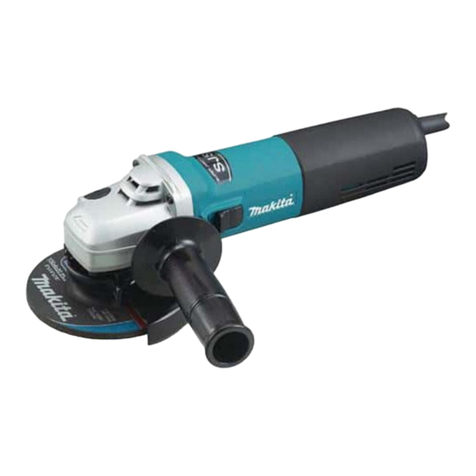
19
Hörverlust erleiden. Verwenden Sie je nach Anwendung
Vollgesichtsschutz, Augenschutz oder Schutzbrille.
Soweit angemessen, tragen Sie Staubmaske,
Gehörschutz, Schutzhandschuhe oder Spezialschürze,
die kleine Schleif- und Materialpartikel von Ihnen fernhält.
Die Augen sollen vor herumiegenden Fremdkörpern
geschützt werden, die bei verschiedenen Anwendungen
entstehen. Staub- oder Atemschutzmaske müssen den
bei der Anwendung entstehenden Staub ltern. Wenn Sie
lange lautem Lärm ausgesetzt sind, können Sie einen
Hörverlust erleiden.
h) AchtenSiebeianderenPersonenaufsicheren
AbstandzuIhremArbeitsbereich.Jeder,derden
Arbeitsbereichbetritt,musspersönliche
Schutzausrüstungtragen.Bruchstücke des
Werkstücks oder gebrochenes Zubehör können
wegiegen und Verletzungen auch außerhalb des
direkten Arbeitsbereichs verursachen.
i) FassenSiedasElektrowerkzeugnuranden
isoliertenGriffflächen,wennSieArbeitenausführen,
beidenendasEinsatzwerkzeugverborgene
StromleitungenoderdaseigeneNetzkabeltreffen
kann. Der Kontakt mit einer spannungsführenden
Leitung kann auch Metallteile des Elektrowerkzeuges
unter Spannung setzen und zu einem elektrischen
Schlag führen.
j) HaltenSiedasNetzkabelvonsichdrehenden
Zubehörfern.Wenn Sie die Kontrolle über das
Werkzeug verlieren, kann das Netzkabel durchtrennt
oder erfasst werden und Ihre Hand oder Ihr Arm in das
sich drehende Zubehör geraten.
k) LegenSiedasElektrowerkzeugniemalsab,bevor
dasZubehörvölligzumStillstandgekommenist.
Das sich drehende Zubehör kann in Kontakt mit der
Ablageäche geraten, wodurch Sie die Kontrolle über
das Elektrowerkzeug verlieren können.
l) LassenSiedasElektrowerkzeugnichtlaufen,
währendSieestragen. Ihre Kleidung kann durch
zufälligen Kontakt mit dem sich drehenden Zubehör
erfasst werden, und das Zubehör sich in Ihren Körper
bohren.
m) ReinigenSieregelmäßigdieLüftungsschlitzeIhres
Elektrowerkzeugs.Das Motorgebläse zieht Staub in
das Gehäuse, und eine starke Ansammlung von
Metallstaub kann elektrische Gefahren verursachen.
n) VerwendenSiedasElektrowerkzeugnichtinder
NähebrennbarerMaterialien.Funken können diese
Materialien entzünden.
o) VerwendenSiekeinZubehör,dasflüssige
Kühlmittelerfordern.Die Verwendung von Wasser oder
anderen üssigen Kühlmitteln kann zu einem
elektrischen Schlag führen.
2)RÜCKSCHLAGUNDENTSPRECHENDE
WARNHINWEISE
• Rückschlag ist die plötzliche Reaktion infolge eines
hakenden oder blockierten drehenden Zubehörs, wie
Schleifscheibe, Schleifteller, Drahtbürste usw. Verhaken
oder Blockieren führt zu einem abrupten Stopp des
rotierenden Zubehörs. Dadurch wird ein unkontrolliertes
Elektrowerkzeug gegen die Drehrichtung des Zubehörs
an der Blockierstelle beschleunigt.
• Wenn z. B. eine Schleifscheibe im Werkstück hakt oder
blockiert, kann sich die Kante der Schleifscheibe, die in
das Werkstück eintaucht, verfangen und dadurch die
Schleifscheibe ausbrechen oder einen Rückschlag
verursachen. Die Schleifscheibe bewegt sich dann auf
die Bedienperson zu oder von ihr weg, je nach
Drehrichtung der Scheibe an der Blockierstelle. Hierbei
können Schleifscheiben auch brechen.
• Ein Rückschlag ist die Folge eines falschen oder
fehlerhaften Gebrauchs des Elektrowerkzeugs. Er kann
durch geeignete Vorsichtsmaßnahmen, wie nachfolgend
beschrieben, verhindert werden.
a) HaltenSiedasElektrowerkzeuggutfestund
bringenSieIhrenKörperundIhreArmeineine
Position,inderSiedieRückschlagkräfteabfangen
können.VerwendenSieimmerdenZusatzgriff,falls
vorhanden,umdiegrößtmöglicheKontrolleüber
RückschlagkräfteoderReaktionsmomentebeim
Hochlaufzuhaben.Die Bedienperson kann durch
geeignete Vorsichtsmaßnahmen die Rückschlag- und
Reaktionskräfte beherrschen.
b) BringenSieIhreHandnieindieNähesich
drehendesZubehör.Das Zubehör kann sich beim
Rückschlag über Ihre Hand bewegen.
c) MeidenSiemitIhremKörperdenBereich,inden
dasElektrowerkzeugbeieinemRückschlagbewegt
wird.Der Rückschlag treibt das Elektrowerkzeug in die
Richtung entgegengesetzt zur Bewegung der
Schleifscheibe an der Blockierstelle.
d) ArbeitenSiebesondersvorsichtigimBereichvon
Ecken,scharfenKantenusw.VerhindernSie,dass
ZubehörvomWerkstückzurückpralltund
verklemmt.Das rotierende Zubehör neigt bei Ecken,
scharfen Kanten oder wenn es abprallt, dazu, sich zu
verklemmen. Dies verursacht einen Kontrollverlust oder
Rückschlag.
e) VerwendenSiekeinKetten-odergezähntes
Sägeblatt.Solches Zubehör verursacht häug einen
Rückschlag oder den Verlust der Kontrolle über das
Elektrowerkzeug.
3)SPEZIELLEWARNHINWEISEZUMSCHLEIFENUND
TRENNSCHLEIFEN
a) VerwendenSieausschließlichdiefürIhr
ElektrowerkzeugzugelassenenSchleifkörperund
diefürdieseSchleifkörpervorgesehene
Schutzhaube.Schleifkörper, die nicht für das
Elektrowerkzeug vorgesehen sind, können nicht
ausreichend abgeschirmt werden und sind unsicher.
b) GekröpfteSchleifscheibenmüssensomontiert
werden,dassihreSchleifflächenichtüberder
EbenedesSchutzhaubenrandeshervorsteht. Eine
unsachgemäß montierte Schleifscheibe, die über die
Ebene des Schutzhaubenrandes hinausragt, kann nicht
ausreichend abgeschirmt werden.
c) DieSchutzhaubemusssicheramElektrowerkzeug
angebrachtundsoeingestelltsein,dassein
HöchstmaßanSicherheiterreichtwird,d.h.der
kleinstmöglicheTeildesSchleifkörperszeigtoffen
zurBedienperson.Die Schutzhaube soll die
Bedienperson vor Bruchstücken, zufälligem Kontakt mit
dem Schleifkörper und Funken, die die Kleidung in Brand
setzen könnten, schützen.






















